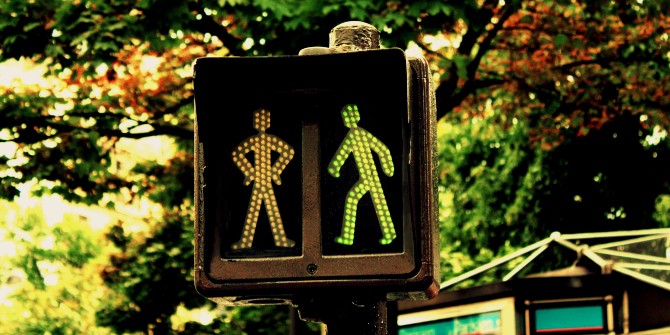City centres are currently almost empty. Richard Florida (Rotman School of Management and University of Toronto) predicts that knowledge workers will spend less time in the office – but that does not necessarily mean a boom in suburban living. Instead, they will seek out attractive, high-amenity places in cities and more remote rural areas, where they can work, play and educate their children, often within a 15-minute radius. Service workers in city centres will fall further behind, and economic and geographic divides will widen.
The pandemic and the economic and social crises to which it has given rise are not so much a disruptor as an accelerator of ongoing changes in the way we live and work. There is a great deal of talk about the changes in where people work, and the way they do it. But in my view the biggest and most fundamental change will be less about the geography of residence, and more about the geography of work.
Since the 1980s, the advanced nations have been moving from an older, industrial economy – where people work with their backs and their brawn – to a knowledge economy, where they work with their minds. This trend is apparent when you look at the percentage of people with advanced degrees and who work in the knowledge economy, or the rise of what I dubbed the creative class of scientists, techies, innovators, knowledge workers, artists and designers.
What we used to call ‘telework’ and now call remote work grew a little prior to COVID-19. Roughly 5% of knowledge workers were working from home before the pandemic, although 20-40% would have liked to. Then came reliable broadband and the rise of new technologies like Zoom, which coincided with the pandemic. Not all these workers will return full-time to the office. Knowledge workers are currently very highly concentrated in large cities like London and New York.

The central business districts (CBDs) of large cities are also a relic of the old industrial age – these are the places which packed and stacked office workers in giant skyscraper canyons. The rise of remote work will very likely result in less demand for office space in these CBDs. Best estimates place the reduction in demand at 20-30%. This will have a significant impact, especially on lower-income service workers in the restaurants, cafes and shops that support these office economies. It will also negatively impact cities’ tax revenues and their fiscal situation.
But there is an opportunity to remake these office neighbourhoods to create actual live-work neighbourhoods, with more affordable housing. City centre housing briefly became more affordable after the 2008 financial crisis, but then prices surged again, and that may happen again this time: after all, the US economy is predicted to grow 7.5% next year. London, New York and Berlin have survived far worse than this, and they will come back. The oligarchs could decide they’re better off in Monaco and Miami Beach, but we will still see demand from knowledge workers, and that risks making city centres unaffordable for service workers and most of the middle classes. The traditional suburbs will be hit a lot harder than people think: both big cities and attractive places with special amenities will enjoy an enormous premium.
This is the moment to remake those skyscraper canyons as better, more integrated and affordable urban neighbourhoods. Paris’s mayor, Anne Hidalgo, has been anticipating and leading just such a refashioning of her city, following the model of urbanist Carlos Moreno and his notion of a 15-minute city, where you can live, work and send your kids to school within a small radius. Some of the work that used to be done in the CBD will move out into private offices, coworking or neighbourhood third spaces.
At the same time, there is an enormous opportunity to decentralise places of work, and add work and jobs to more remote suburban and rural bedroom communities, making them more self-sufficient. Taken together, these trends could help reduce commuting, save energy and reduce pollution.
Remote work also portends real challenges for workers and cities. In the US, some tech companies are using remote work as an excuse to reduce pay for workers who choose to live in less expensive areas. At the same time, the corporations themselves are threatening to move to lower-tax states, creating a proverbial race to the bottom and putting pressure on progressive cities to reduce social spending, cut regulation and create more business-friendly climates.
The new reality and geography of work accentuates class divides. The most advantaged class – the 1% – now have the resources and ability to move where they like, and in the US many are relocating to reduce their taxes. The 20-30% of knowledge and creative workers are also afforded new freedom and flexibility by creative work, though we are currently downloading far more responsibility on to these highly atomised people. They are now expected to set up technological infrastructure in their own homes and provide care and education for their children. Another two-thirds of the workforce will fall further and further behind. Without real strategic, economic action, these divides are going to widen.
If the acceleration to how and where we work is big, the disruption to traditional educational models may be even larger. With many public schools shut, advantaged families in the US have begun putting their children into pod schools with a few other families. It suits them and disrupts the traditional school environment. Personal trainers are being replaced by personalised online training such as Peloton bikes. And online university courses are now far easier to deliver at scale. Yet some people still don’t have a computer at home, and will be excluded from these shifts. While remote work has been going on for some time, we are at the very earliest changes in the shift to new educational models. It is hard to say exactly how those changes will materialise, but the moment of disruption to education has arrived.
Already, two major global movements – populism on the right and Black Lives Matter on the left – have emerged as a result of these challenges. But we need to acknowledge this socioeconomic disjuncture by introducing a new and better social welfare system that gives people material support and also enables them to find purpose and meaning in their life and work. This would include policies like a universal basic income and the ability to find and do purposeful work, whether that is start-up or community work. The progressive left has to do a much better job of engaging with these critical issues in order to gain the support of the working class and those working in service industries.
This post represents the views of the author and not those of the COVID-19 blog, nor LSE. It is based on Richard Florida’s contribution to Urban Age Debates: Cities in the 2020s: Socialising Remote Work, an event hosted by the LSE’s School of Public Policy, LSE Cities and the Alfred Herrhausen Gesellschaft.





